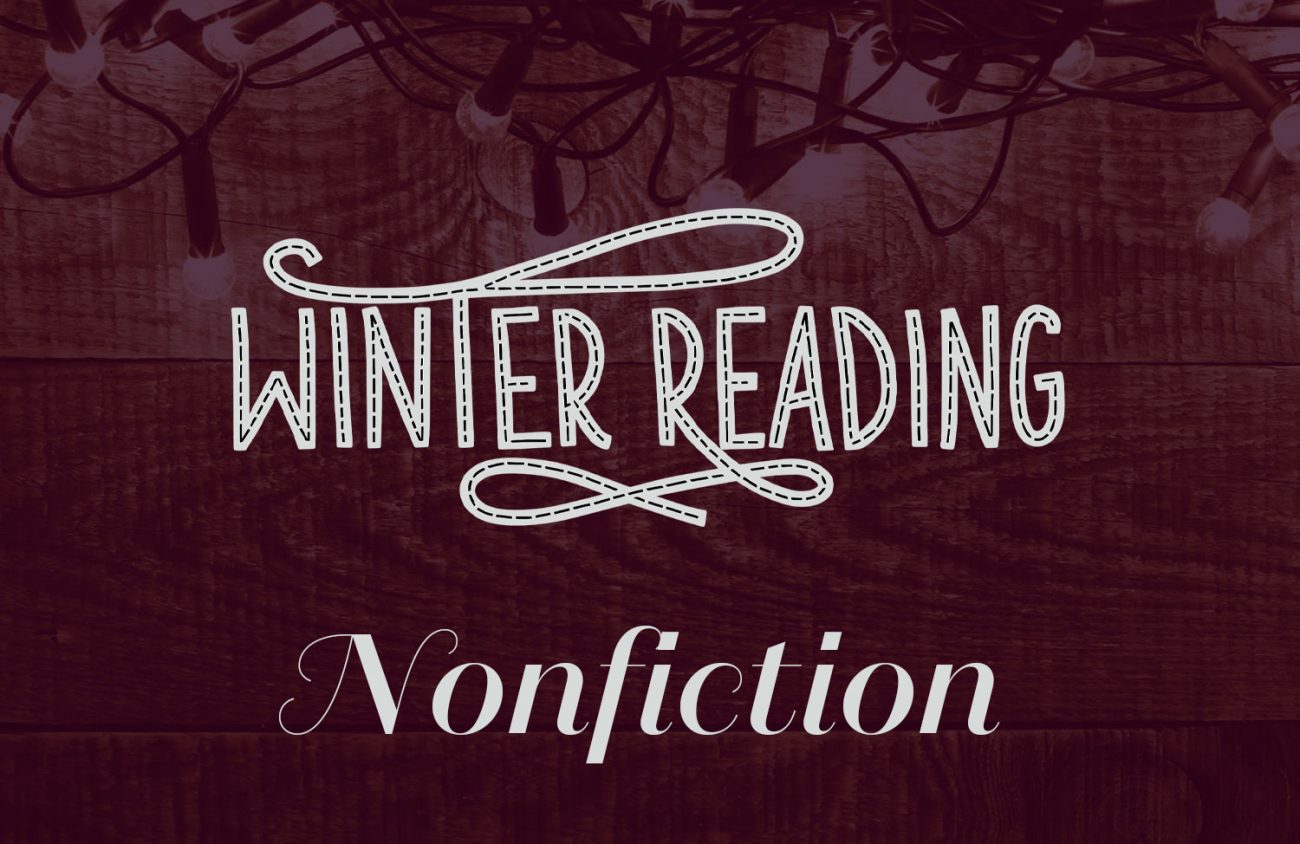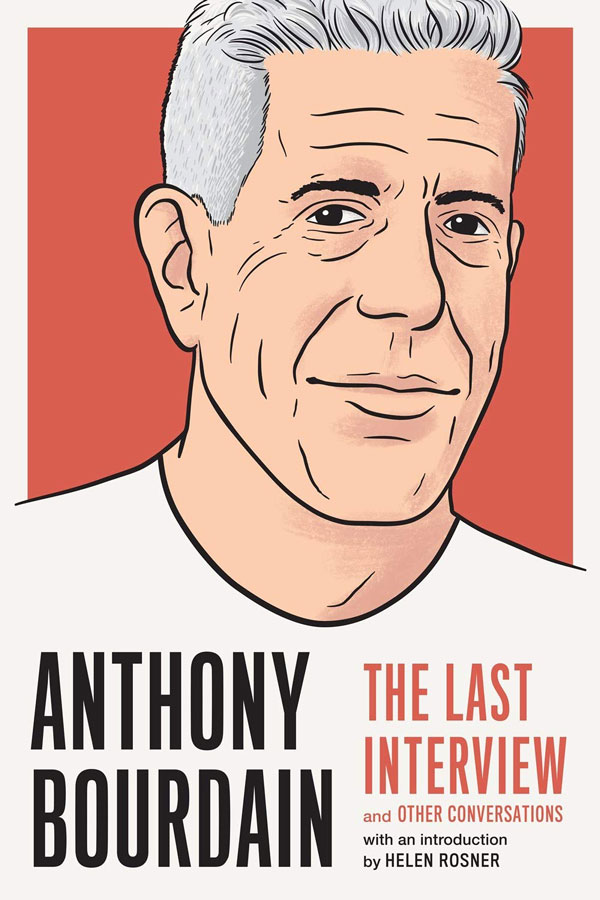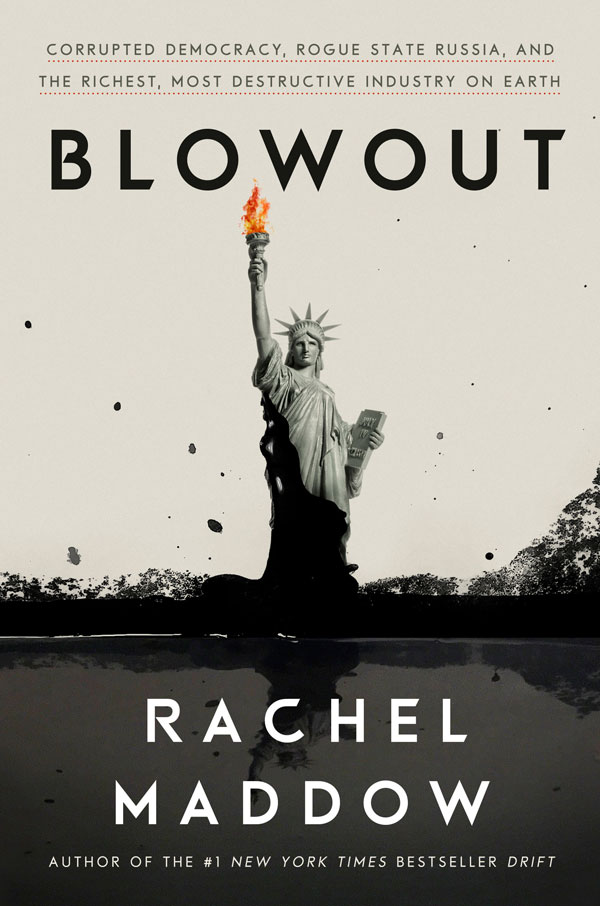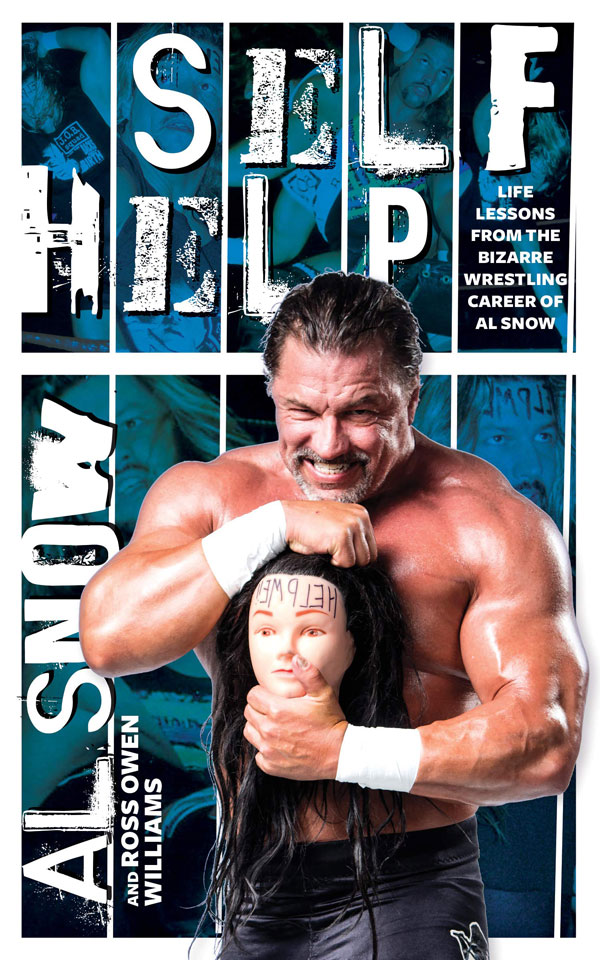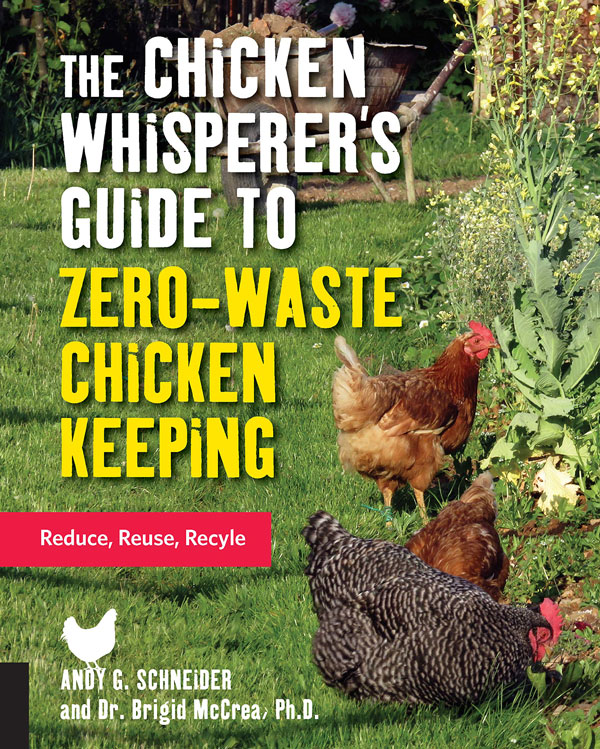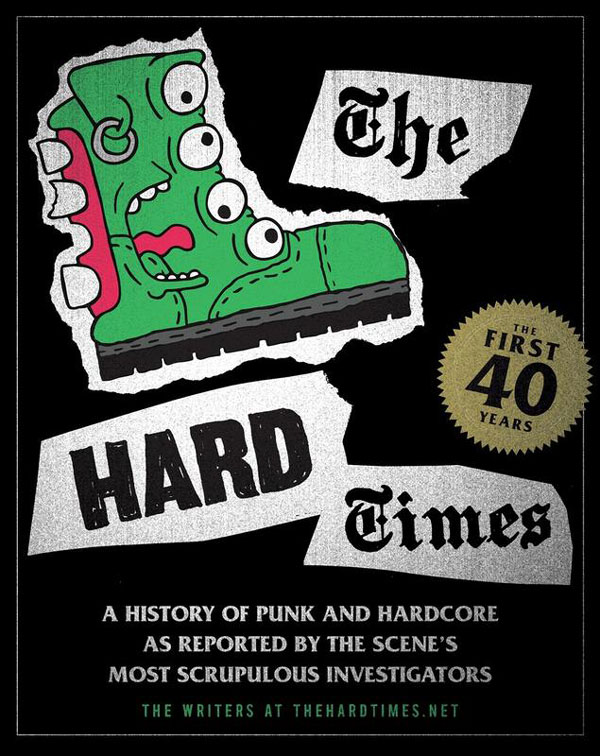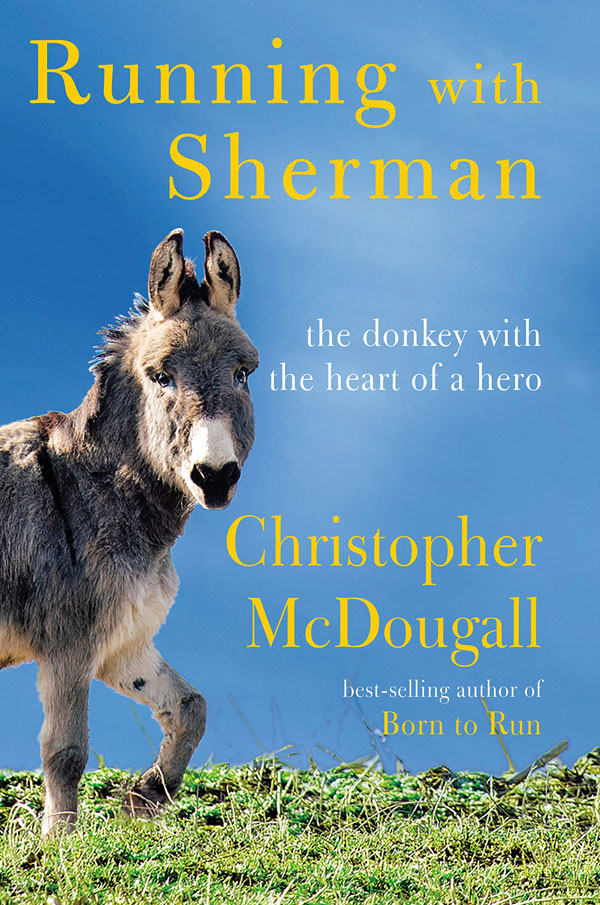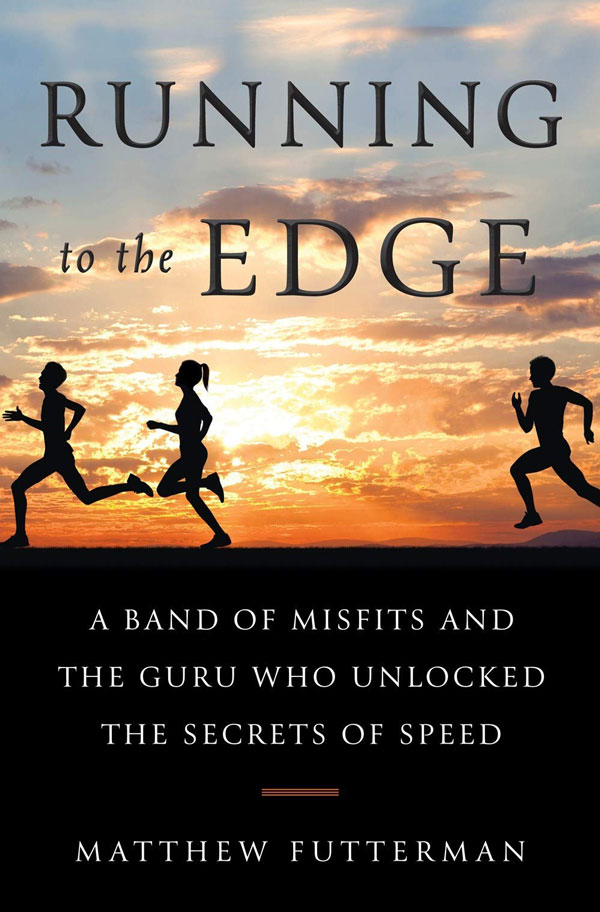Anthony Bourdain: The Last Interview and Other Conversations Melville House Publishing, $16.95.
I was mad when I picked up the new book Anthony Bourdain: The Last Interview and Other Conversations. I wanted some answers. Was I ready to check in with Tony, who killed himself two years ago this April? I’d followed Bourdain from acclaimed author to world-traipsing gonzo-eater, to his late-in-life transformation to a slightly more mature ambassador of a Bourdainian worldview. A worldview summed up nicely by: “There’s no problem that can’t be solved by conversation and a shared meal.”
Bourdain’s inclusion in the Last Interview series puts him in some rarified air, alongside Ernest Hemingway, Norah Ephron and James Baldwin. The book series anthologizes interviews and conversations with the subject, this time between Bourdain and the likes of Neil Degrasse Tyson and Trevor Noah. Subjects covered in conversation range from the unlikely success of Bourdain’s breakout book Kitchen Confidential to his second act as a world traveling TV star on both the Travel Channel and CNN. Other topics include how to navigate culture with food, geo-politics and the universal appeal of a good meal.
The book offers no real answers. I shouldn’t have expected any. Bourdain took those with him. For the most part, though, it is nice to hear from an old friend. “We should feed our enemies Chicken McNuggets,” he quips at one point. More than anything, Bourdain remains one of us: a wordy loser who broke through to the other side — a pencil in one hand and a fork in the other. At another point, Bourdain comments to Australian chef, critic and food writer, Jill Dupliex, “I’m kind of optimistic about the future of the world.” That one stings, Tony, because the world’s so much worse off without you. — Will Kennedy
Blowout Corrupted Democracy, Rogue State Russia, and the Richest, Most Destructive Industry on Earth by Rachel Maddow. Crown, $30.
This book should be required reading for every student interested in investigative journalism and deep research. Rachel Maddow digs deep into the oil and gas industry, revealing a level of corruption impossible to imagine. She does it with the same love of detail she displays in her broadcasts, sometimes spinning a web that’s tough to follow. She has a brilliant chapter on fracking by the gas industry in Oklahoma and how the citizens were so deceived that they didn’t even know the fracking was causing earthquake after earthquake.
Another brilliant chapter describes the Internet Research Agency, Russia’s sophisticated organization that influenced America’s last election and probably will influence the next. Maddow’s dark humor often surfaces at the end of an especially ridiculous quote from an oil and gas executive when she zings her typical response. But this book really is a call for action to curb this corrupt and destructive global industry. As she puts it, “Democracy either wins this one or disappears.” — Anita Johnson
Self-Help: Life Lessons from the Bizarre Wrestling Career of Al Snow by Al Snow and Ross Owen Williams. ECW Press, $19.95.
Back in the 1990s, pro wrestler gimmicks often went over my head. One wrestler at the time was Al Snow, whose entrance music began with the line, “What does everybody want?” and the audience chanting, “Head!” Snow would then come out with a Styrofoam head. With self-help advice peppered throughout the book, Snow looks back at his career in pro wrestling — a journey that didn’t end in Hollywood as it did for Dwayne “The Rock” Johnson or John Cena.
Snow’s story takes him from the early beginnings of losing money in order to learn the ropes of wrestling on indie wrestling promotions, to becoming somewhat of a mid-card hit on WWE weekly TV shows, leading to an MTV reality show called “Tough Enough” and all the way back to the indie shows again.
Snow offers insight into the industry’s locker room politics, an environment that, in true carny fashion, doesn’t let outsiders in without a ribbing, which makes the book worth it for the ridiculous stories. The ribbing can go far — like bringing a goat to another wrestler’s hotel room. Of course, sometimes it goes too far, and Snow recounts a time when MMA-trained pro wrestler Steve Blackman nearly killed another wrestler for pinching his ass too many times.
Don’t let the title of the book fool you — the advice borders on Panda Express fortune cookies and offers the reader a break from the narrative. Instead, the advice you can garner from Snow’s book is the proverb, “God helps those who help themselves,” because despite the setbacks, the moral of Snow’s story is to never give in to adversity. — Henry Houston
The Chicken Whisperer’s Guide to Zero-Waste Chicken Keeping: Reduce, Reuse, Recycle by Andy Schneider. Quarry Books $19.99.
It’s no secret that a sustainability and homesteading movement is in full swing around us. Naturally, that has led to more and more families embracing the small, feathered dinosaurs, commonly called “chickens.” There is nothing quite like a fresh egg with your morning breakfast and collecting your own egg from your favorite feathered friend makes it even better. With most cities adopting ordinances allowing small-scale back yard chicken keeping, this is a reality more and more families get to experience.
Keeping chickens can be messy though, and they come with a lot of waste. The Chicken Whisperer’s Guide to Zero-Waste Chicken Keeping is a practical guide aimed to help you reduce this waste, and how to easily run a zero waste sustainable backyard flock. The book follows a chronological order, starting with caring for chicks, and covers all life stages of chicken rearing. It is well written, detailed and full of several useful tips. It also includes several beautiful full color photographs that help the reader to gain perspective.
A must have for every chicken owner, whether you have three hens or 50. — Elisha Young
The Hard Times: A History of Punk and Hardcore as Reported by the Scene’s Most Scrupulous Investigators by Matt Saincome, Bill Conway, Krissy Howard, Houghton Mifflin Harcourt, $20.
Founded in 2014, The Hard Times is a satirical website that doesn’t pull its punches when ribbing punk, video game and millennial culture. With headlines like “Punk Hoping Dad’s Trump Support is just a Phase” and “Guy Reading Print Newspaper Must Be Steampunk or Something,” no one is safe from The Hard Times’ ridicule.
Because the site is so successful it has its own presidential candidate, Ace Watkins, it makes sense to release a book, which riffs on historical events from the past 40 years — from “Billy Carter Tapes Over Watergate Recording with Sweet Demo” to “Local Man Gets in Touch with Nature by Relentlessly Instagramming Hike” — but also returns to some the site’s “greatest hits.”
The latter half of the book revisits online articles. That means you can own — in print — copies of classic articles such as: “Rebellious Vegan Teen Tofu-Scrambles Principal’s House,” “Man Magically Transforms into Music Historian while Talking to Women,” “Dad Thinks a Hard Day’s Work is Pretty Punk Rock if You Ask Him” and so much more.
Besides the often-relatable content and headlines, The Hard Times’ articles don’t fall flat, though writers have a tendency to overuse “as of press time” sentences. But The Hard Times’ debut into the book world, in short, is making bathroom (or coffee table, for those who have evolved somewhat) reading great again. — Henry Houston
Running with Sherman: The Donkey with the Heart of a Hero by Christopher McDougall, Alfred A. Knopf, $27.95.
Christopher McDougall’s Born to Run introduced the Mexican indigenous running tribe Tarahumara and the idea that Nike running shoes killed the runner’s foot to readers worldwide. Now McDougall returns to print with a book focused on a U.S. tradition: burro racing in Leadville, Colorado.
But, as any runner preparing for a race knows, the story is in the training and preparation. Set mostly in Amish Country, McDougall adopts a previously neglected donkey named Sherman. He’s told that Sherman needs a purpose in life, so after recalling an ultra marathon in Colorado that brings together donkeys and humans, he decides to get Sherman involved.
In Running with Sherman, McDougall recalls how the community comes together to save a donkey that was at first destined for euthanasia, and the person who forms the strongest connection with Sherman: a young adult named Zeke who left college after a suicide attempt.
McDougall writes the story with an energy that makes it easy to sprint through the book, which might inspire you to find a donkey running partner — though I’m still too scared of a kick to run behind one.
Born to Run looked at the human nature of running and how consumerism has caused Westerners to lose that connection. Running with Sherman looks at “punk rock” burro racing. To finish the race, you’ve got to forget about human dominance and ego, and instead work with your four-legged running partner. It shows how running can form relationships that not only returns us to the beauty of the sport but can also allow us to re-connect with animals. In other words, McDougall has once again written a must-read for runners. — Henry Houston
Running to the Edge: A Band of Misfits and the Guru who Unlocked the Secrets of Speed by Matthew Futterman, Doubleday, $28.95.
Eugene is home to the waffle shoe that became Nike, the legendary running rock star Steve Prefontaine and a Hayward Field that transformed into a monster. But New York Times deputy sports editor Matthew Futterman writes the story of a Southern Californian coach who changed the sport of running and got results.
Running to the Edge is the story of Bob Larsen, the coach behind Meb Keflezighi’s 2004 marathon silver medal. Before the glory of bringing a medal back to the U.S., Larsen was a community college coach in the San Diego area and worked with a group of runners who called themselves the Jamul Toads.
Larsen’s secret strategy was for runners to go fast for longer distances, a revolutionary idea in the running world that was still hooked on speed intervals at the track. By pushing the Jamul Toads to the edge, Larsen tested his strategy and found it worked.
The group went from underdogs in mismatched running clothes at still-growing meets and defeated one of the most accomplished track clubs in the U.S. — Colorado Track Club — at the national cross-country championships. And the group was so underground that Larsen drove the team to the meet with one of the runners in a car’s trunk.
Futterman weaves in his own marathon running throughout the story and his push to qualify for the Boston Marathon, showing the reader what running means to him and why he continues to run.
Local readers will appreciate one of the runner’s, Ed Mendoza, and his experience in Eugene for the Olympic trials in the early 1970s. Mendoza was so overcome by allergy-induced asthma that he had to visit an emergency room.
For non-runners, this book may sound as riveting as taking off for an early morning 10-mile run. But, for a town that’s about to host the 2021 international track and field championships, this ought to be some required reading. Futterman illustrates the world of running in the 1960s and 1970s.
For runners, Running to the Edge is a read that, if read before a run, gets you pumped to lace up and pound the pavement. It’s a book that should quickly be on every runner’s bookshelf. — Henry Houston
Working: Researching, Interviewing, Writing by Robert Caro, Alfred A. Knopf, $24.95.
Robert Caro is the author of books that have covered two powerful men in the U.S. during the 20th century: former President Lyndon Johnson and New York City developer Robert Moses. For Caro’s work on these men, he’s twice been awarded the Pulitzer Prize.
Caro’s latest book, Working, isn’t a memoir, he writes in the introduction, because his career isn’t over; he still has plans for a fifth book on Johnson and then a memoir. Instead, the book is meant to offer insight into what it was like for him to interview two men responsible for what the U.S. looks like today.
Moses was a man whose expressway development in New York City dislocated communities and created slums. Johnson’s legacy, though tainted by the escalating Vietnam War, created a social net that millions benefit from and leveraged his Washington power to pass the Civil Rights Act of 1964.
Caro recounts how he dug up documents and maps to find information. He reflects on interviews he had with Moses, essentially one-way conversations dictated by Moses that could go from the early morning into the late evening.
Yet he doesn’t do interviews over the phone or parachute into a geographic location. He takes his time in the location. For the books on Johnson, he recalls interviews with poor white people in Texas who were some of the last people to go without electricity. He writes that as men worked all day in the field, women, some with permanent damage from birthing, had to carry water in a yoke much like oxen. He remembers one woman saying she couldn’t stand John Wayne movies because the portrayal neglected to show the struggle women had as Americans took over the West.
Working doesn’t only provide readers a glimpse into the process of writing biographical books on people who wield a tremendous amount of books. Caro breaks down how he was able to peer into the lives of the powerful, whose decisions have incredible weight, but also how he got information from people impacted by these decisions. It’s a book that should be mandatory reading for journalists, as well as for anyone who wonders about the sausage-making process behind well-researched books. — Henry Houston
